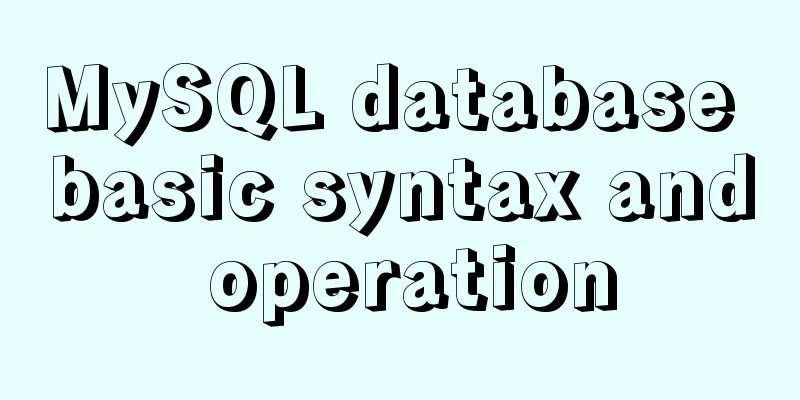MySQL database basic syntax and operation

MySQL database basic syntaxDDL Operations Create database syntax: create database database name; DML Operations Insert data syntax: insert into table name (field name) value (content) constraint Primary key constraint features: uniqueness, non-nullability. Setting primary key and auto-increment primary key: When creating a table, add the primary key after the field to be set as the primary key. DQL Operations Basic query query all: This is the end of this article about the basic syntax and operations of MySQL database. For more relevant MySQL database syntax content, please search for previous articles on 123WORDPRESS.COM or continue to browse the related articles below. I hope everyone will support 123WORDPRESS.COM in the future! You may also be interested in:
|
<<: Three ways to draw a heart shape with CSS
Recommend
How to deploy Oracle using Docker on Mac
How to deploy Oracle using Docker on Mac First in...
How to use HTML+CSS to create TG-vision homepage
This time we use HTML+CSS layout to make a prelim...
Detailed tutorial on compiling and installing python3.6 on linux
1. First go to the official website https://www.p...
How React Hooks Work
Table of contents 1. React Hooks vs. Pure Functio...
Angular framework detailed explanation of view abstract definition
Preface As a front-end framework designed "f...
How to deploy hbase using docker
Standalone hbase, let’s talk about it first. Inst...
React realizes secondary linkage effect (staircase effect)
This article shares the specific code of React to...
How MySQL Select Statement is Executed
How is the MySQL Select statement executed? I rec...
The difference between HTML name id and class_PowerNode Java Academy
name Specify a name for the tag. Format <input...
Detailed tutorial on installing mysql 5.7.26 on centOS7.4
MariaDB is installed by default in CentOS, which ...
React method of displaying data in pages
Table of contents Parent component listBox List c...
Solve the problem of Access denied for user 'root'@'%' to database 'xxx' after creating a database in MySQL
Preface I recently encountered a problem at work....
Tomcat uses Log4j to output catalina.out log
Tomcat's default log uses java.util.logging, ...
How much data can be stored in a MySQL table?
Programmers must deal with MySQL a lot, and it ca...
Detailed explanation of how to copy and backup docker container data
Here we take the Jenkins container as an example ...









